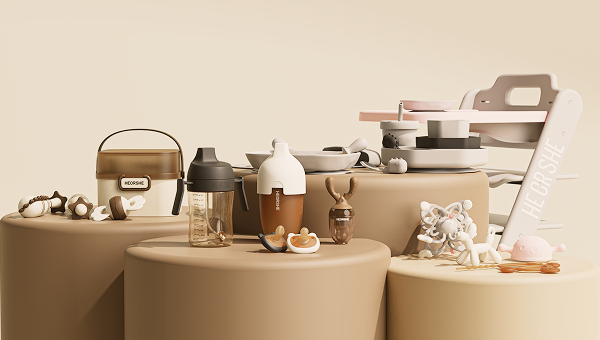Choosing the right feeding set for your toddler is an important decision that can impact their mealtime experience and development. Toddler feeding sets typically include plates, bowls, cups, utensils, and sometimes additional accessories designed specifically for young children. With a wide variety of options available on the market, it's essential to consider several factors to ensure you select a feeding set that meets your child's needs and preferences. Here's a comprehensive buying guide to help you make an informed decision:
1. Material
When choosing a toddler feeding set, consider the material used to manufacture the products. Common materials include plastic, silicone, bamboo, stainless steel, and melamine. Each material has its pros and cons in terms of durability, safety, and ease of cleaning. Opt for BPA-free and phthalate-free materials to ensure the safety of your child.
2. Safety
Ensure that the feeding set meets safety standards and regulations for children's products. Look for products that are free from harmful chemicals, sharp edges, or small parts that could pose choking hazards. Check for certifications such as FDA approval or compliance with ASTM safety standards.
Toddler Feeding Set
3. Design and Functionality
Consider the design and functionality of the feeding set, taking into account your child's age, developmental stage, and mealtime habits. Look for features such as divided plates or bowls to separate different food items, non-slip bases to prevent tipping or spilling, and ergonomic utensils with easy-to-grip handles suitable for small hands.
4. Ease of Cleaning
Choose a feeding set that is easy to clean and maintain, as you'll be washing these items frequently. Dishwasher-safe sets are convenient for busy parents, while hand-washable sets should be easy to clean with mild soap and water. Avoid products with intricate designs or crevices that may trap food particles and be difficult to clean.
5. Durability
Look for feeding sets made from durable materials that can withstand daily use and occasional drops or spills. While plastic and silicone are lightweight and durable options, stainless steel and bamboo are more eco-friendly and long-lasting choices. Consider investing in a high-quality feeding set that will last through your child's toddler years.
6. Size and Portability
Consider the size and portability of the feeding set, especially if you plan to use it at home and on the go. Compact and stackable designs are convenient for storage and travel, while lightweight materials are easy to carry in diaper bags or backpacks. Look for sets that come with storage or carrying cases for added convenience.
7. Additional Features
Some toddler feeding sets come with additional features or accessories that enhance their functionality. These may include lids for storage or transport, suction bases to keep plates in place, temperature-sensitive spoons or bowls, or interchangeable parts for customization. Consider your child's specific needs and preferences when choosing a set with additional features.
Conclusion
By considering factors such as material, safety, design, ease of cleaning, durability, size, portability, and additional features, you can choose a toddler feeding set that meets your child's needs and fits your lifestyle. Investing in a high-quality feeding set can make mealtime enjoyable and stress-free for both you and your toddler, fostering healthy eating habits and promoting independence.



